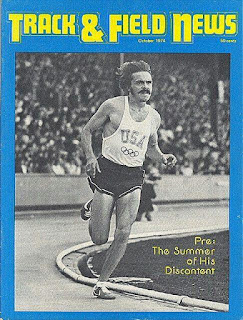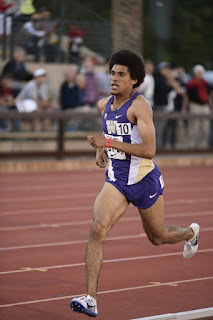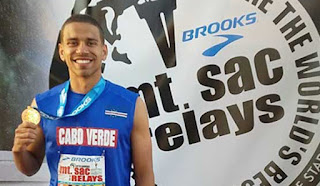An end of an era--Track & Field News transitions to an all-digital format...
Track and Field News announced on its website Tuesday and in an email to its subscribers, that the publication will cease publishing in magazine form, and will only publish electronically.
While on one hand, I don’t feel too bad about it (I’ve been subscribing to the magazine the last few years as a PDF because quite frankly, I don’t have much space to store magazines), it’s a testament to what’s going on in the magazine and the newspaper publishing business, which as many of you know, has undergone significant change in the era of the Internet.
On top of that was the news that with the move to digital, there’s a subscription increase to $79. I’ve got to presume it’s to make up for the decrease in advertising revenue.
While details are still to be worked out, it’s safe to assume that the magazine will go to a paywall version on its website, similar to the model used by many daily newspapers (i.e., you get a certain amount of free articles every month before you have to pay to access the site).
A little story here—almost two years ago, I was asked to meet with Heather Romano, the publisher of Northwest Runner, where I got the news that the magazine would cease publishing because the owners, Club Northwest, could not find a buyer for the publication.
Now while I sensed that it was coming, there’s a bit of a shock after finding out that the magazine that I’ve contributed numerous articles and photos since writing my first article in 1987 about the Oregon system of training distance runners was going belly up.
 |
| The final print cover of Track & Field News-- high jumper Mutaz Barshim |
As I left that meeting with Heather, I immediately thought about what to do with this blog, because this blog was my way of publishing the items that I couldn’t get into the magazine, including the late-breaking items considered old news by the time the magazine went to press.
Back to Track & Field News…when I got my start in track and field at Sharples Junior High School in south Seattle in the early 1970s, I was exposed to the magazine by my 7th grade gym teacher, Shig Tsutsumi (who, ten years later offered me my first coaching job at Ballard HS).
My interest in the sport was piqued after gym class or after school sports as I read about guys like Dave Wottle, Jim Ryun, Bob Seagren, John Ngeno, and Steve Prefontaine (above/photo illustration courtesy Track & Field News). I somehow convinced my aunt (who had little or no interest in sports) to get me a subscription to the magazine for my birthday.
As I moved on to Franklin HS, many of my teammates couldn’t wait to see the magazine arrive in the office of our track coach, Don Bundy, as we wanted to know who the best high school kids in the country were. Folks like Rudy Chapa from Hammond HS in Indiana, Alberto Salazar from Wayland HS in Massachusetts, Thom Hunt from Henry HS in San Diego, and Billy McChesney from South HS in Eugene were some of the high school studs we read about.
 |
| This photo of Kara Winger that I shot at the USATF nationals in Sacramento was published by T&FN. |
Besides giving me information on what the top track and field athletes in the country and the world were doing, the magazine also gave me a basic template on how to write news and feature articles, as I began writing at the Franklin Tolo student newspaper. In fact, the first feature I wrote for the paper was an interview with the chain-smoking, Speedo wearing shot putter Brian Oldfield, who competed in the International Track Association circuit.
For the most part, I’ve been a loyal subscriber to the magazine, though there were some small stretches where I’d let my subscription lapse, and I’d miss an issue or two, before eventually re-upping.
Over the last fifteen years, I’ve written and shot photos for the magazine, and have been part of the magazine’s coverage at the last several IAAF world track and field championships, in addition to my work on this blog.
As it’s so easy to find results within hours of a meet’s completion, I understand that magazines are almost obsolete. At the same time, if you don’t change to keep up with the times, you’ll get left behind.
But man, there’s nothing more satisfying than physically holding a copy of the latest Track & Field News.



Comments